We are hunting a ghost, ghosts in fact it seems. The Salt Route that hasn’t been documented, this Tsalam that I have dreamt about and that we now seek is becoming akin to chasing vapours, or trying to track windblown sand. My western notion of a ‘route’, the idea of one single ‘route’ being the Salt Road has been annihilated. I should have known better than to assume any one path, road or route can be omnipotent upon the mighty Tibetan Plateau. The essence (which I’ve temporarily lost sight of) of a “route”, especially a trade route through these motionless and giant spaces is made up of many various paths that join, stretch and then veer off from one another. A route here at least, is the sum of its parts, and its parts are fragmented trails, not a single path. A route may have a name but it inevitably has many feeders that contribute – and the route of salt is true to this.
Lower Honkor is a dozen kilometers from the fractious Sichuan border with Qinghai and Michael and I are welcomed by a friendly but wary contingent of border police. Michael and I are both wearing the faces of slightly weary but expectant travelers, who have finally arrived to their long dreamt of paradise. This ‘paradise’ we arrive to is a series of ill-kept row houses, a school compound and a block of buildings that are surrounded by newly built wall. All of this seems shoved into a windblown valley along the Nyi Chu (Nyi River) with a single road adhering it together.
We are told gently that no, we cannot dither about indefinitely asking the elders about salt, and no we cannot trek because of ‘dangers’ – though what dangers we would be likely to encounter, no one elaborates on.
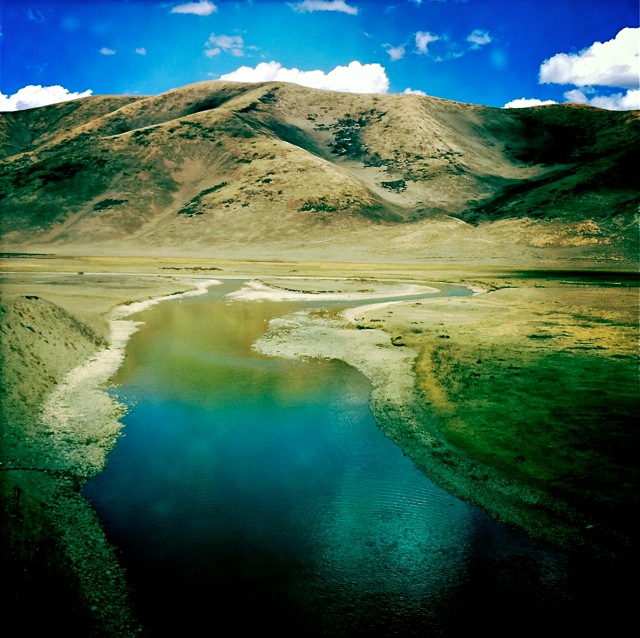
The Nyi Chu river provided a valley 'trail' by which salt caravans, single yak, and nomads accessed the salt sources of Qinghai
Our moods collectively darken, as at this point we need direct communication not promises and smiles that fade with light. My tea consumption (a consistent antidote to all things stressing) has increased to where I’ve got my thermos filled and by my side at all hours. I’ve got a twitch in my left eye jumping around – there is frustration at this point; one of any ‘exploration’s’ less talked about inevitabilities. We’ve been pointed in directions, gotten whiffs of the salt, the route, felt we’re close only to have the door (which has been permanently ajar, but not open) swing shut on us. The hints, though, are enough.
But then, unexpectedly for reasons that don’t matter but do confuse, we are offered information by locals that yes, salt came through this valley, but never in large amounts and certainly not in caravans, but rather, in groups of two’s and three’s. Yes, salt came in but not from the south as I had imagined, but rather from further west. Families, or simply family members would depart and be back within a week or ten days with a yak or two laden with salt from Sichuan, or this new western locale that is emphasized.
“So should we head to Sichuan’s salt sources”? We ask.
“Mado”, this name comes out at us from nowhere.
“Mado is where you must go to explore the real salt history. It is there that the best salt on the plateau existed”. There are salt and brine wells and salt lakes throughout the Himalayas and upon the Tibetan Plateau, but these are largely mere blips, or well-documented sources. It is the existence of the sources in the nomadic areas that beckon me on – the less documented and ‘hidden’ from view salt centres that we are hunting…and of course those few bodies and minds that still carry their own remnants of tales from the ancient days of trade.
Honkor – Mado
Some would call these wastelands, vast spaces of emptiness that can host only the most rugged life forms…from my heavy eyes; I see that this is as a place of great and silent power that cannot be bent by human hands. These bleak and stunning landscapes measure risk and beauty differently and the ‘reward’ for mistakes or failure here is harsh and often fatal.
We are heading west to Mado and the famed salt lake awaits us (we think). Mado County rests at 4,300 metres and it is known for being one of the coldest counties of all of the Tibetan regions. It is called Marduk to the Tibetans meaning, “high place” and it is that, though the ‘town’ itself was more of a nomadic seasonal dwelling place wedged into a long lake shaped valley.
We feel the bite of the wind in our teeth upon our arrival to Mado with clear blasts of unambiguous winter clattering into us. Nearby, there lies one of the crucial salt sources of the Himalayas, a lake whose salt was exported (and craved) northwards, southwards to connect with the northern Tea Horse Road and onto Lhasa and even westward into northwestern Sichuan. There is an urge to simply dash out, find the lake and dive into its long sought depths – Michael’s pragmatism holds me steady. Finally, it seems, we are closing in on a thus far elusive part of the salt trade history and the blood is rushing again.
Other geographies have provided salt; in northwest Sichuan there are salt sources near ‘Tsaka’ (literally ‘place of salt’), but we have learned that no salt was as craved as much as that which rests (or rested) near Mado. Tibetans have long needed and used salt in their own diets and that of their herds and it has been a commodity second only to tea upon much of the Tibetan Plateau.
Mado feels as though in its previous incarnation it was simply another valley surrounded by a rolling abyss; travel in any direction and you enter onto high altitude, snow-spotted plains that are hemmed in by peaks that are themselves locked down with snowcaps. These errant snow patches infuse me with bursts of expectation – something perhaps about the way the snow stubbornly clings onto life and refuses to fade under the monster sun. I am starting to see the snow as a metaphor for this Tsalam salt roads that we seek – something tempting us on with little bits of good news hidden within a lot of contradictions, holding on a little longer for a last gasp of air before fading altogether.
During a trek out of town southwest (towards our now beloved salt lake) we see the land in all of its glory and finally now we are able to imagine (and in my case hunger for) the salt route itself. Above us, hovering in a dorky kind of menace, enormous vultures sweep along with the thermals. Their presence is that of an overseer and undertaker all at once.
Tomorrow a lake beckons – a body of water that was a beacon for nomads across the Himalaya, a body of water that provided the highest quality salt to those connoisseurs who craved it – tomorrow, we will dip our hands into Tsam Tso (Salt Lake).

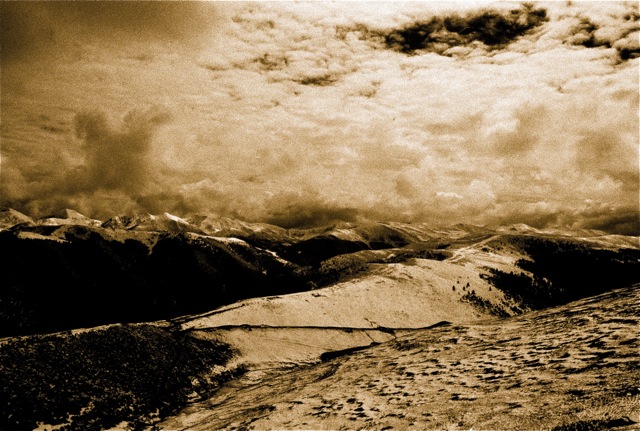


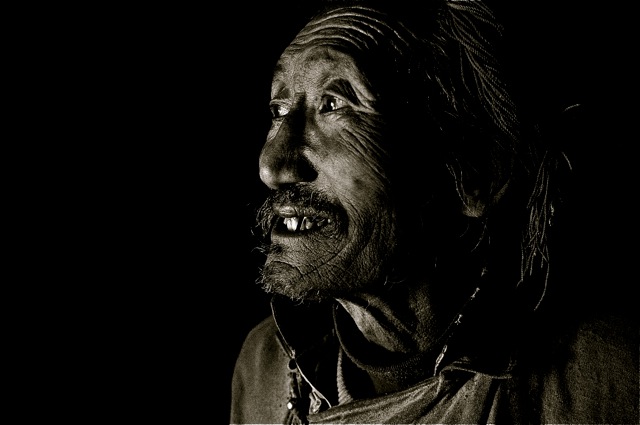

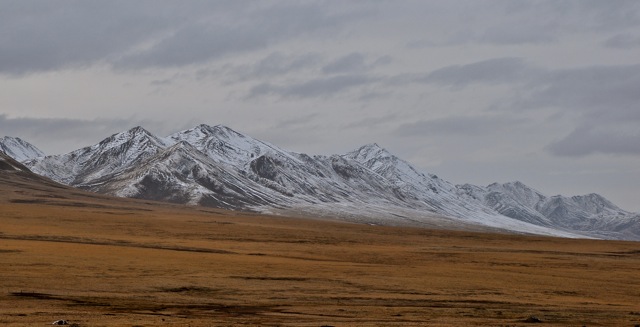

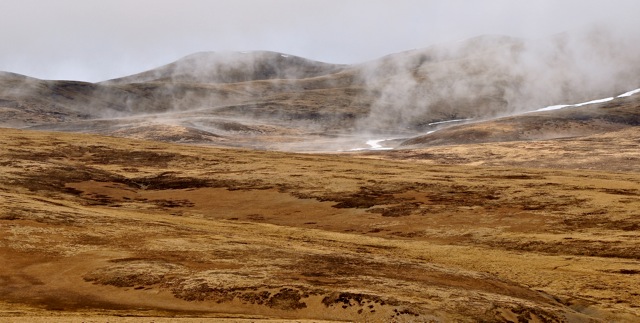
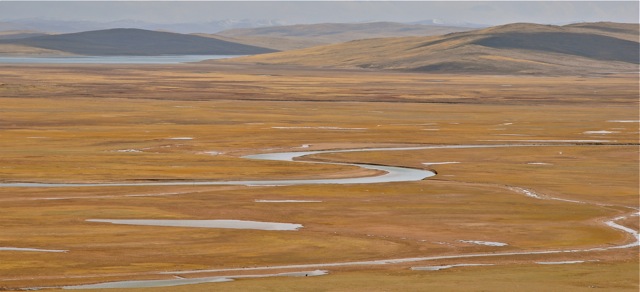
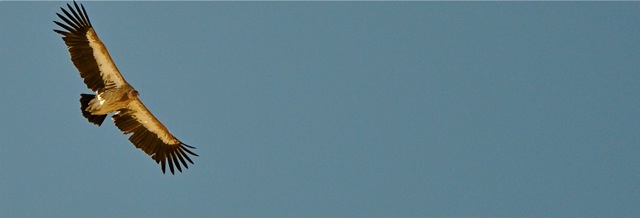
AYYY , AYYY, AYYY… !!!… DIOS MIO !!!!
TAKE CARE BOTH OF YOU !!!
I hope you dip already your hands into Tsam Tso.
Be patient, drink tea and enjoy places with great and silent power .
Hug
P&P
Good to learn that “the green” is keeping your spirits up during trying times, Jeff.
I am interested to learn what makes the salt from Mado so special, and better than salt from other areas (lack of impurities, religious associations, etc.).
Best wishes,
Peter
Hi Jeff,
A couple new questions from my class – how cold is the area you are travelling? How are you prepared to deal with the weather?
Take care, Gen
Some quick and easy answers on temperatures. Days tended to be around ten degrees at roughly 4,000 metres but as soon as the sun drops (or in some cases doesn’t appear at all) the temps dropped quickly. Coldest night was -8 and our coldest days were -4 Celsius. We layered up clothing with micro fleece tops, those wonderful things called long johns, with a priority being put on windproof materials and the winds add the real cold elements. Lots of hot fluids (aka tea), intaking dulse (seaweed) with loads of sodium and potassium and keeping our heart rates (and subsequent body temps) up. At night we are essentially wearing most of our clothes….I under a rancid smelling blanket that has I’m sure never been washed.
cheers for now,
Jeff